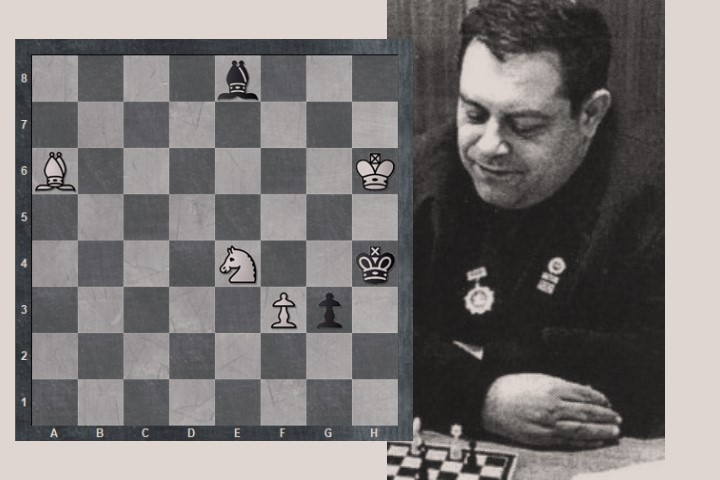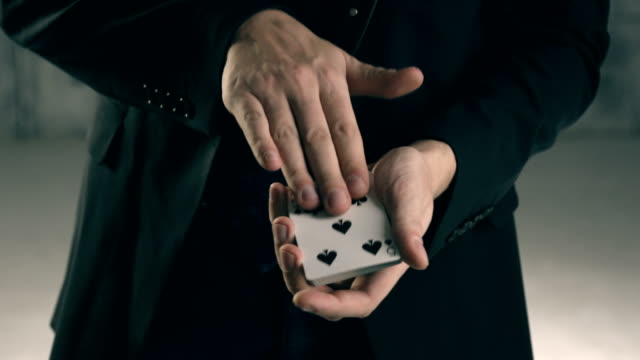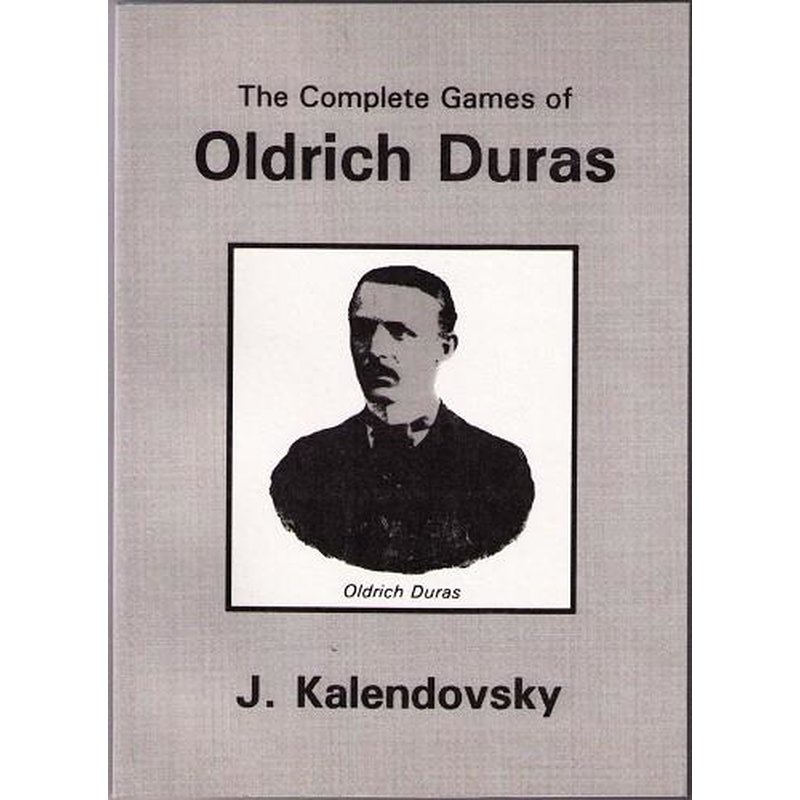


Let me start with two December stories, despite it being August. In December 2020, I browsed on Wikipedia through the entries of my old hometown and saw a former chess-club colleague listed there. Having looked at his website, I found a contact address and wrote to him quickly, whereas my former teammate Martin Sörös provided a video of his musical work, him being a world-renowned jazz music player nowadays. I knew he played the piano, but didn’t know he was on such a high level, having believed it to be a ‘normal’ job for him to play locally. Boy, was I wrong!
 I was also wrong when I saw another video on the same video platform in which an excerpt of a holiday episode of Penn & Teller: Fool Us can be seen. Magician Asi Wind showed a card trick there, then presented the explanation on how he supposedly did it. The final part of his performance showed that, as he had said before, nothing on a stage is not part of the illusion — a fact he demonstrated by showing that his explanation of the trick was an illusion too, one to preserve the magic for the spectators.
I was also wrong when I saw another video on the same video platform in which an excerpt of a holiday episode of Penn & Teller: Fool Us can be seen. Magician Asi Wind showed a card trick there, then presented the explanation on how he supposedly did it. The final part of his performance showed that, as he had said before, nothing on a stage is not part of the illusion — a fact he demonstrated by showing that his explanation of the trick was an illusion too, one to preserve the magic for the spectators.
The actual explanation can, of course, be worked out or found online as, but it is the viewer who will choose if they want to know how it is done — whether they want to ’lose the magic’.
What I didn’t realize at the time I saw this first is that Penn & Teller themselves, being magicians with decades of experience, might have pulled the greatest of all tricks: by having that show in Las Vegas, they can be spectators again, they can experience the illusions again, they can ‘regain the magic’.
All the stories above share another common detail: Striving for what makes you happy. Only few people are in the lucky position to turn their beloved art into their profession. While writing is not a full-time occupation for me, as you see above, I turn my hobbies into information to reference. That means that essentially the things I enjoy turn naturally into a kind of general research which I might reference later, while specific research is done for specific topics. In rare cases, such as here, I also use older articles I wrote as a basis while trying to avoid repeating their contents. The previous article on this subject is found in EG 223, but included only two endgame studies, as it was a kind of kaleidoscope article as well. So here I will elaborate it in detail.
Magic is a term that has been used for endgame studies sometimes. They lack the illusion, but it is still incredible what can happen there. It is as if a sleight of hand is revealed, but it makes the trick just more amazing. Now, I don’t know of anyone who can make a living from endgame studies — certainly FIDE is a great sponsor for chess composition, enabling the existence of the World Federation for Chess Composition, FIDE tourneys such as the annual World Cup in composing, and even giving a one-time honour to some composers through their Senior program. Other deserving chess enthusiasts are also honoured at times.
 In March, for example, historian Jan Kalendovsky was included in that list, who wrote numerous books, columns and articles. As such, the program broadens its range, whereas it once started with names such as Nona Gaprindashvili — one of the patrons of the chess club NTN (Nona Tigran Nana) in Tbilisi, which held the Nona study composing tourneys named after her in the 2000s decade, organized by our late friends Iuri Akobia, Vazha Neidze, and probably others.
In March, for example, historian Jan Kalendovsky was included in that list, who wrote numerous books, columns and articles. As such, the program broadens its range, whereas it once started with names such as Nona Gaprindashvili — one of the patrons of the chess club NTN (Nona Tigran Nana) in Tbilisi, which held the Nona study composing tourneys named after her in the 2000s decade, organized by our late friends Iuri Akobia, Vazha Neidze, and probably others.
A special kind of magic is turning one thing into another, this can be called transformative magic (or a switcheroo). In endgame studies, one such transformation is turning a stalemate into a checkmate. My favourite example of this is a Pogosyants study that is repeated as the first replayable entry below, which has, I think, appeared in this column before.
(Random fact: I’m not only a great fan of Ernest Pogosyants, but also a fan of the musician POGO, who often uses movie samples to create songs).
What particularly inspired me to write about this topic was a beautiful new example on the front of EG 225. Amatzia Avni is known for his ‘Munchausen’ stories, a chess parody of the old German tale of Baron Münchhausen, which in itself was a satire on adventure stories. Dare we say, a modern Smullyan? Yochanan Afek should require no further introduction, as in fact it would be beyond scope. His numerous feats in organizing events and composing studies are only rivalled by his excellent writing skills.
Taking the queen results in stalemate, but with 1.Ng6!! everything is made clear. We prefer the variation 1.-Q:a7 2.Nf4 mate, but the authors seemingly gave 1.-K:g6 2.h5+ K:h5 3.R:h7 wins as the main variation. As such, we believe the three final variations, including 1.-Q:g6 2.Ra5+ wins, are all main variations, but the Moroccan tourney did not make it clear.
FRME is the French abbreviation of the Royal Moroccan Chess Federation. As an additional fact, the position above is won if the white rook is on a7, b7, or e7 (with a dual here). The rook on c7 and d7 fails to the diagonal being used by the queen. The rook on f7 fails because it is next to g6, so if the king takes the knight, Black draws; and if the queen takes it, he even wins. In addition, f7-f4 is also a straight line, so the queen could even take the rook. However, adding a White pawn on e3 and a Black pawn on e4 with the rook on f7 would put Black to move in a losing position still (although not a mutual zugzwang, sadly). I remember trying ideas similar to that zugzwang a while ago, but likely after the study above was published (without knowing about it).
So here I might walk in Pogosyants’ steps (see last month) by slightly changing already published studies to add new ideas. Of course, the Israeli cooperation is more beautiful, but I find such comparisons interesting.
If someone wants to create a real endgame study from this, mutual zugzwang should be added. In the schema, after 1.Rf7, White to move wins with 1.Rf8, 1.Rf1, 1.Rf2 or 1.Rf3, as all lead to a deadly zugzwang. The best solution I found is very ugly. The additional pawns prevent 1.Kg3 and 1.Kh3.
Expert Challenge: create an endgame study that uses a similar idea but is pleasing!
Another stalemate-to-checkmate transformation is seen in the form of underpromotions. We talked about those in the past, but they are an all-time favourite of mine. However, very few underpromotion studies actually end in a checkmate, as most of them end earlier. I present the following studies in the style of puzzles in an annotated book. The complete studies are replayable below the article.
Timman’s endgame study shows the ‘Phoenix’ theme, named after the mystical firebird that is reborn from its ashes. The bishop is sacrificed but then ‘reborn’ by underpromoting. Readers who want to solve the study (prior to replaying it below) need to be aware that the play must be precise, so the second move matters.
There are two famous Alexander Kotovs. The chess grandmaster (1913 - 1981) is not identical to the composer. This could be compared to the two players with the name Max Lange. The confusion here is not as bad tough, as the player Kotov created far less chess compositions, if any.
The study, however, is interesting for a different reason. Black uses the underpromotion to set up his own stalemate, but White destroys that stalemate to deliver checkmate. While it only broadly fits the idea of exchanging a stalemate for a checkmate (from the viewpoint of White), I thought the study should be included nonetheless, as very few fitting studies exist in general. After 1.Bd3! Black loses easily with 1.-a1Q+ 2.Bf1 Bb8 3.bxa8Q Qxa8 4.c5+ Ka7 and any neutral move wins immediately, such as 5.Kh1, 5.f4. The authors used 5.b5 Qb7 6.cxb7. The real question, however, is: How does White win after 1.-a1R+!! 2.Bf1 Bb8 3.bxa8Q Rxa8? The answer is not hard to find.
Timman’s idea of course wasn’t new, so I entrust the readers with a more difficult study now, including a longer introduction. However, after 1.Nc4+ Ka1 2.Bc1 dxc3 3.Bb2+ cxb2 4.Nd2 the threat of checkmate forces measures by Black. After 4.-Rd4+ 5.Kxd4 Ne2+ the first question is: where does the king move to? 6.-Nc1 7.Nb3+ Nxb3 8.cxb3 leads to more familiar patterns. Second question: how does play continue here so that White win?
We have two more endgame studies this month, which both are interesting in their own regard. There exist a few more with similar ideas to the one above, but repeating the same idea doesn’t seem too interesting. Instead, I selected one that might take the cake of underpromotions, giving checkmate after a king walks out of perpetual check; and one that is a very beautiful tactical battle.
As the exact date is given, the source likely is a newspaper. However, the study certainly would stretch the space in a newspaper. With the hints given above, it should be possible to solve the study, although it might not be easy at first. After all, where is a hiding spot, or how could one be created?¡
This study offers it all: a tense battle, great play on both sides, and a satisfying ending. In addition, the sidelines show how everything just fits. The beginning is easy to find: 1.b7 Qc4+ 2.Kxh5 Rg8. But how can White continue the attack? This study is not easy to solve, but rewarding. Most readers will likely want to see the solution in the replayable entries below, as there won’t be many solvers who are strong enough and haven’t seen it before. However, strong players also could give it a try, as the key idea to winning is to keep up the pressure against the king.
Finally, my apologies go to readers this month for the lower-than-usual quality of the article, as I still need to learn to use Chess Query Language (CQL) to find the endgame studies I would need to show (as such, I showed underpromotion studies with a similar theme instead).
Those studies above were found with the file "underpromotionecho" in version 6.1, extracted from the database of Harold van der Heijden.
Chess Query Language is a powerful tool that has an own programming language, which is the part I still don’t fully understand how to use (maybe that will come with more experience?). It can be used to find not only endgame studies, but also everything else saved in PGN files, including games. If you want to try it, you should use a reasonably big database — if you use ChessBase databases, you will have to convert them to PGN from CBH — and specify what you search for in a CQL file you create, or use the premade files, and then run the program.
For full instructions see the CQL website]. For some reason, the Linux/Unix versions are sent out by the authors, but not downloadable directly. I don’t think there is any GUI available for any system. VisualCQL worked for earlier versions, but I didn’t test it on CQL 6 or 6.1, as it says it works only with CQL 3.

World Federation for Chess Composition (www.wfcc.ch)